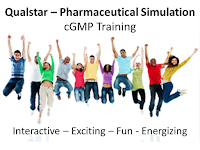Updated June 3, 2020
The original post didn't age well.
You might also be interested in this 21 CFR 820 Audit Checklist found on SCRIBD:
https://www.scribd.com/doc/162185575/122763962-Audit-Checklist-9001-13485-21-cfr-820
- - - original post follows below - - -
If you're not quite ready, or are in the process of putting together your own internal audit checklist, it's a good idea to get ideas from others. Get a feel for checklist content, organization, and layout. Look at this excerpted portion of a checklist from Jack Kanholm's book (ISO 13485 and FDA QSR Internal Audit Checklist): ISO 13485:2003 Internal Audit Checklist - Demo Download.
Related Posts:
Free 21 CFR Part 820 QSR Audit Checklist
You might also be interested in:
Surviving an FDA Inspection - a training course by SkillsPlus International Inc.
This class prepares plant personnel to participate in an FDA Inspection.Return Home: The Health, Drug, Prescription, and GMP Supersite Blog
 |
| Our most popular course |
 |
| Put fun back into GMP training! |
SkillsPlus Intl Inc. - The best GMP training, best QSR training, best instructors







